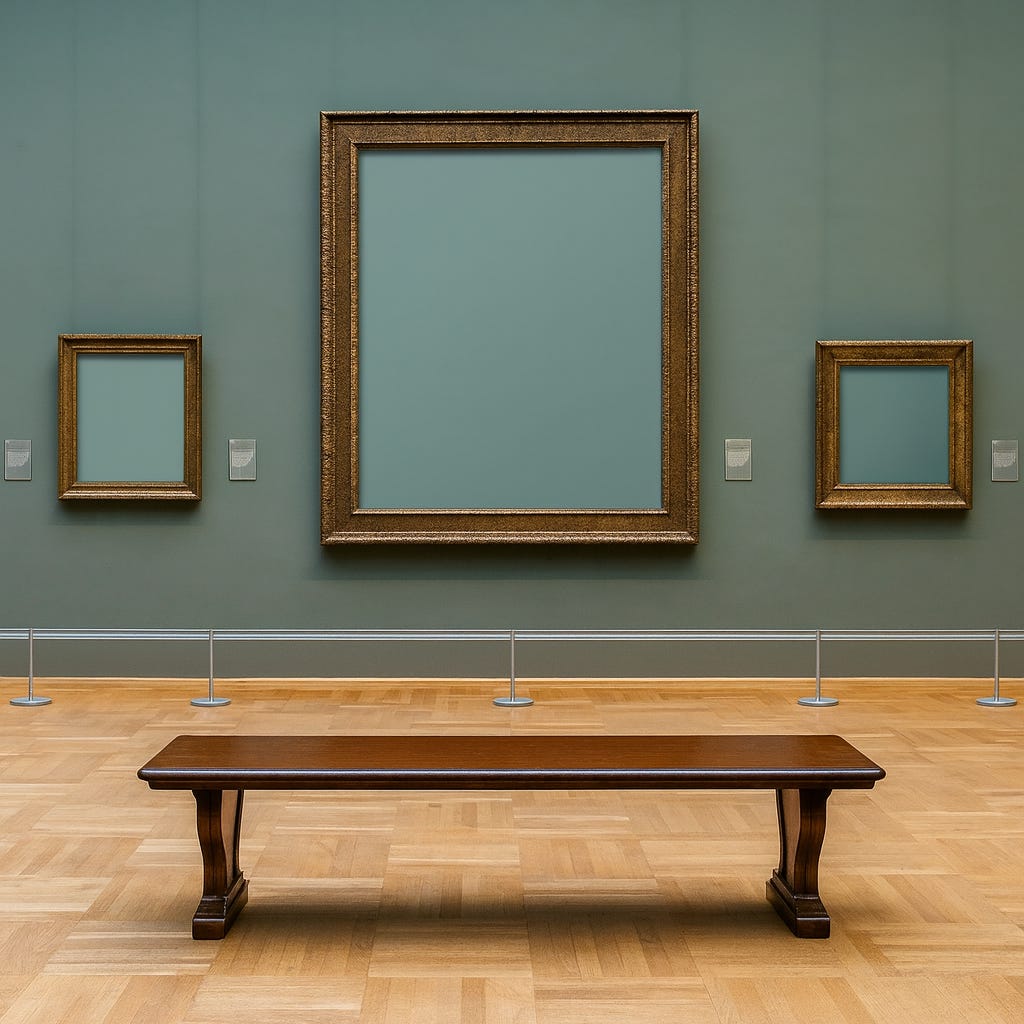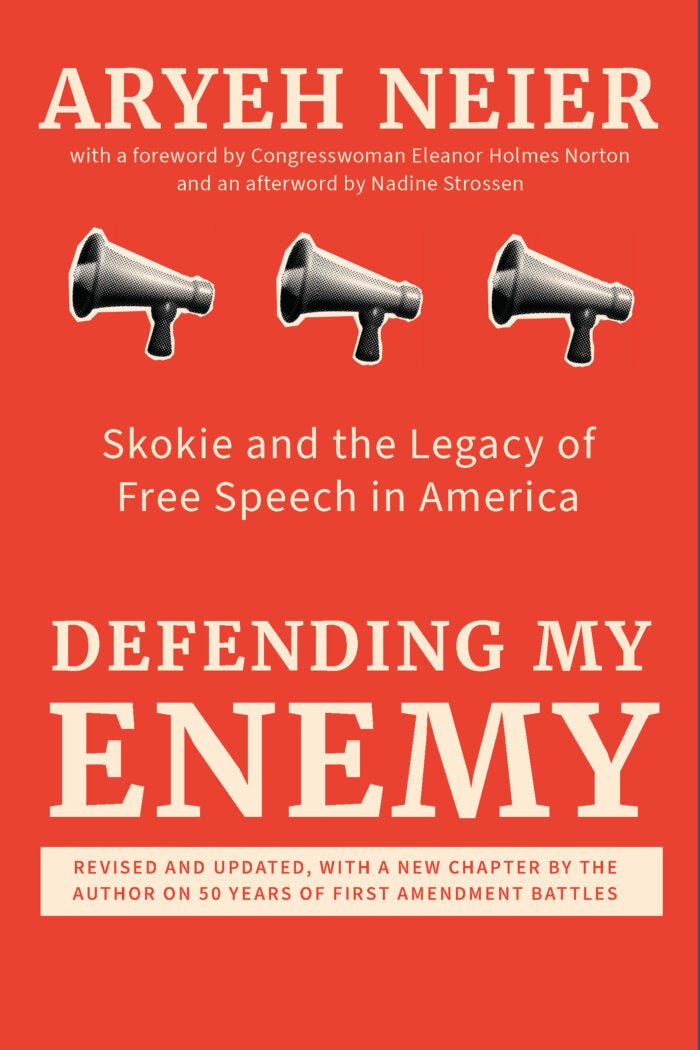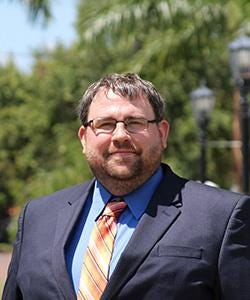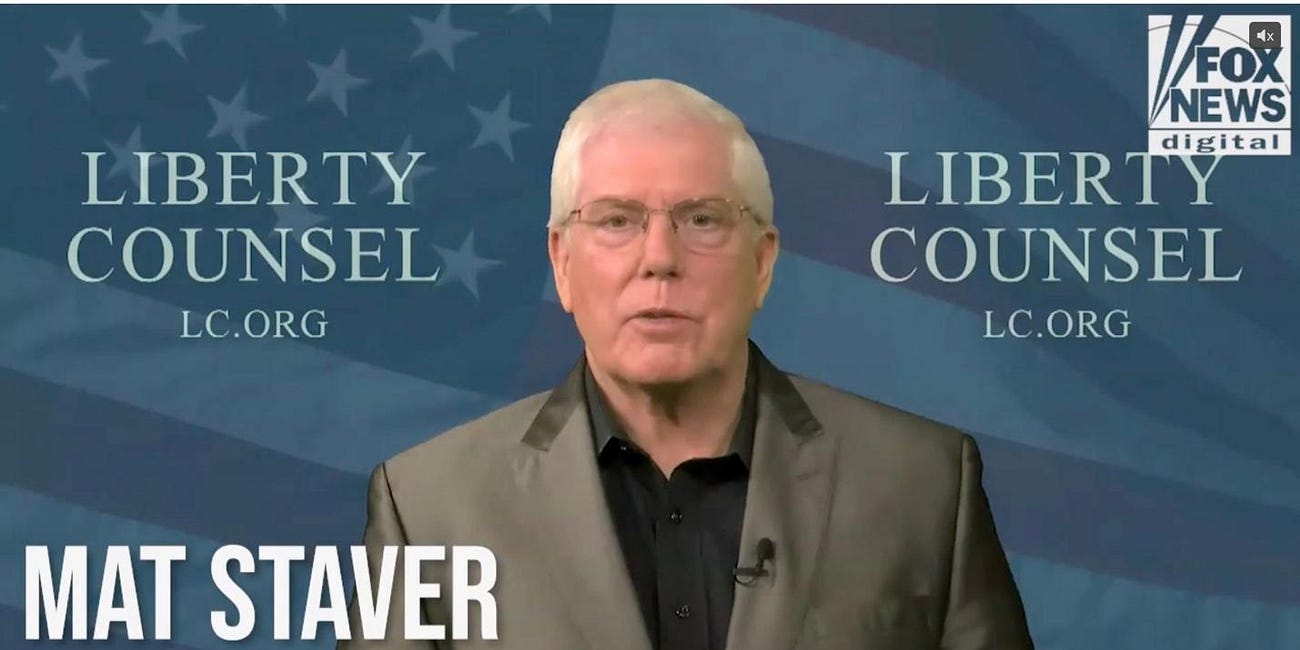Muzzling Museums: Trump’s chilling threats persist
First Amendment News 483
“It’s a new, beautiful, Smithsonian Museum that serves as a shining example of African Americans’ incredible contribution to our culture, our society, and our history.”
— Donald Trump, (Feb. 2017)
Museums, especially, are spaces where the country tells a story about itself. Trump is trying to rewrite that story by empowering his people to remake the Smithsonian, and by calling out as objectionable exhibitions about slavery, gay rights and immigrants at a number of the institution’s museums in Washington. These attacks appear to be an effort to redefine why museums exist.
— Jess Bidgood and Robin Pogrebin, The New York Times (Aug. 25)
Like a mafia boss, his threats continue. Never mind whether his actions are illegal since he doesn’t really care — tag it his “So what!” stratagem. Valid laws and judicial decrees are for chumps; that’s his governing strategy. His aims: retaliate against his critics and chill the speech of anyone whose views are contrary to his. In all of this, he can count on the obedience of his first lieutenant, Attorney General Pam Bondi, among other submissive officials in his cabinet.
When all the law dust settles, it doesn’t matter if the administration loses a case or twenty so long as it manages to intimidate hundreds of others similarly situated. That’s happened with law firms, universities, libraries, and media outlets. Now add museums to the list of THE MUZZLED.
If nothing else, Trump is a master of irony, of saying things that are wildly contradictory to his actions. Take, for example, his executive order of March 27th titled, “Restoring Truth and Sanity to American History.” The objective: Suppress truth, contest sanity, and in the process abridge and rewrite history until it suits his whims. His purported concern:
Over the past decade, Americans have witnessed a concerted and widespread effort to rewrite our Nation’s history, replacing objective facts with a distorted narrative driven by ideology rather than truth.
The irony, of course, is his actions rewrite the truth of our history, portions of which have been suppressed and/or ignored. To that end, the mandate is “prohibit expenditure on exhibits or programs that degrade shared American values, divide Americans based on race, or promote programs or ideologies inconsistent with Federal law and policy.”
Never mind that “the purpose of these museums is not to celebrate or denigrate the United States. It is to accurately and comprehensively reflect the country’s history and citizenry.” In stark contrast, by Trump’s imperialist measure, the purpose of museums and all other governmental and private institutions is simply to praise those aspects of the past and present that comport with Trump’s whims.
And never mind that the “president does not technically have the right to unilaterally dictate the content of Smithsonian exhibitions or to direct its decision-making. That includes hirings and firings such as when Trump posted on social media that he was firing the director of the National Portrait Gallery (she eventually resigned).” Whether he has any legitimate power to exercise in this area is of no import to him. Again, such concerns are for chumps.
Chilling other museums into ideological compliance
Trump’s strategy: Go after their funding, demonize those whose views are different, exaggerate and lie, and don’t fret over what courts might say. The aim, after all, is to terrify all those similarly situated bystanders into Pavlovian compliance. Simply consider what Trump posted on Truth Social recently:
The Museums throughout Washington, but all over the Country are, essentially, the last remaining segment of “WOKE.” The Smithsonian is OUT OF CONTROL, where everything discussed is how horrible our Country is, how bad Slavery was, and how unaccomplished the downtrodden have been — Nothing about Success, nothing about Brightness, nothing about the Future. We are not going to allow this to happen, and I have instructed my attorneys to go through the Museums, and start the exact same process that has been done with Colleges and Universities where tremendous progress has been made. This Country cannot be WOKE, because WOKE IS BROKE. We have the “HOTTEST” Country in the World, and we want people to talk about it, including in our Museums.
In other words, this suppression campaign will not stop with the Smithsonian. As with law firms, universities, media outlets, and others, the larger objective is to frighten many others into subservience. Case in point, one ably made by New York Times reporters Jess Bidgood and Robin Pogrebin:
The administration’s efforts have already had a chilling effect, at least on the Smithsonian Institutions. The National Portrait Gallery, for example, considered removing from its upcoming Amy Sherald exhibition a painting that depicted a transgender Statue of Liberty. Sherald saw this as artistically compromising, and ended up canceling the entire show. That was arguably an example of self-censorship on the part of the Smithsonian, because the Trump administration hadn’t yet complained about the exhibition (though it ultimately applauded the cancellation).
Related
Zachary Small, “As Trump Targets the Smithsonian, Museums Across the U.S. Feel a Chill,” The New York Times (Aug. 23)
“AAM Statement on the Growing Threats of Censorship Against U.S. Museums,” American Alliance of Museums (Aug. 15)
Jonathon W. Penne, Danielle Keats Citron, and Alexis Shore Ingber, “The Chilling Effects of Dobbs,” Florida Law Review (2025)
Trump threatens to investigate yet another critic: Chris Christie
Mike Ives, “Trump Threatens to investigate Chris Christie over ‘Bridgegate’,” The New York Times (Aug. 25)
President Trump floated the idea after the former governor of New Jersey, a onetime ally, criticized his use of the Justice Department.
President Trump on Sunday threatened to investigate former Gov. Chris Christie of New Jersey over a 2013 political scandal, days after the F.B.I. raided the home and office of another former Trump official turned critic.
Mr. Trump made the threat on social media after Mr. Christie said during an appearance on ABC News that the president ‘doesn’t care’ about maintaining a separation between his office and criminal investigations.
Mr. Christie, a Republican who was a federal prosecutor before he was elected governor, had been discussing Mr. Trump’s connection to recent F.B.I. searches of the Maryland home and Washington office of John R. Bolton, a national security adviser in the president’s first term.
[. . .]
Mr. Trump wrote on his Truth Social platform late Sunday that Mr. Christie had lied about 2013 lane closures on the George Washington Bridge “in order to stay out of prison, at the same time sacrificing people who worked for him.” The president was referring to a decision by Mr. Christie’s associates to close access lanes to the bridge, which links New Jersey and Manhattan, in order to punish the Democratic mayor of a New Jersey town.
“Chris refused to take responsibility for these criminal acts,” Mr. Trump wrote. “For the sake of JUSTICE, perhaps we should start looking at that very serious situation again? NO ONE IS ABOVE THE LAW!”
Executive order targets flag burners
Executive Order, “Prosecuting Burning of the American Flag” (Aug. 25)
Notwithstanding the Supreme Court’s rulings on First Amendment protections, the Court has never held that American Flag desecration conducted in a manner that is likely to incite imminent lawless action or that is an action amounting to “fighting words” is constitutionally protected. See Texas v. Johnson, 491 U.S. 397, 408-10 (1989).
My Administration will act to restore respect and sanctity to the American Flag and prosecute those who incite violence or otherwise violate our laws while desecrating this symbol of our country, to the fullest extent permissible under any available authority.
Sec. 2. Measures to Combat Desecration of the American Flag.
(a) The Attorney General shall prioritize the enforcement to the fullest extent possible of our Nation’s criminal and civil laws against acts of American Flag desecration that violate applicable, content-neutral laws, while causing harm unrelated to expression, consistent with the First Amendment. This may include, but is not limited to, violent crimes; hate crimes, illegal discrimination against American citizens, or other violations of Americans’ civil rights; and crimes against property and the peace, as well as conspiracies and attempts to violate, and aiding and abetting others to violate, such laws.
(b) In cases where the Department of Justice or another executive department or agency (agency) determines that an instance of American Flag desecration may violate an applicable State or local law, such as open burning restrictions, disorderly conduct laws, or destruction of property laws, the agency shall refer the matter to the appropriate State or local authority for potential action.
(c) To the maximum extent permitted by the Constitution, the Attorney General shall vigorously prosecute those who violate our laws in ways that involve desecrating the American Flag, and may pursue litigation to clarify the scope of the First Amendment exceptions in this area.
(d) The Secretary of State, the Attorney General, and the Secretary of Homeland Security, acting within their respective authorities, shall deny, prohibit, terminate, or revoke visas, residence permits, naturalization proceedings, and other immigration benefits, or seek removal from the United States, pursuant to Federal law, including 8 U.S.C. 1182(a), 8 U.S.C. 1424, 8 U.S.C. 1427, 8 U.S.C. 1451(c), and 8 U.S.C. 1227(a), whenever there has been an appropriate determination that foreign nationals have engaged in American Flag-desecration activity under circumstances that permit the exercise of such remedies pursuant to Federal law.
Second Circuit to hear filming in public First Amendment case
“MFIA Clinic Presses Court to Affirm First Amendment Protection for Filming in Public,” Yale Law School (Aug. 19)
This week, the Media Freedom and Information Access (MFIA) clinic at Yale Law School entered a debate currently before the 2nd U.S. Circuit Court of Appeals over whether the First Amendment protects the act of video recording in public spaces.
The 2nd Circuit is set to consider the question in the pending case Massimino v. Benoit, in which the plaintiff was stopped, questioned, and ultimately arrested for filming the exterior of a police department building in Waterbury, Connecticut, from a public sidewalk. Although nine other courts of appeals have recognized some level of constitutional protection for the act of recording in public, the 2nd Circuit has not, leaving would-be recorders at risk, according to the clinic.
On behalf of a group of First Amendment scholars and advocates, the clinic filed an amicus brief arguing that the right to record in public spaces is constitutionally protected under the First Amendment.
“Recording serves important First Amendment interests,” the brief states, by promoting public dialogue, supporting the free flow of information, and allowing citizens to challenge government misconduct. The brief highlights how modern recording devices — such as smartphones — have become indispensable tools for documenting public events and ensuring that government activities are subject to public scrutiny.
Fourth Circuit rules Maryland’s digital tax law unconstitutional
Bryan Sears, “Appeals court rules provision of digital ad tax violates First Amendment protections,” Maryland Matters (Aug. 15)
A provision in Maryland’s digital ad tax is an unconstitutional restriction on free speech, a federal appeals court ruled Friday.
The 2021 law — the first of its kind in the nation — imposes taxes on large tech companies for the digital ads they sell within the state. But it also prohibits those companies from passing the tax on to consumers as a surcharge, fee or line item on their bills — what a three-judge panel of the 4th U.S. Circuit Court of Appeals saw as a ban on telling customers about the newly added tax.
In a ruling that invoked American protests against the Colonial-era Stamp Act, Circuit Judge Julius Richardson wrote that, as then, “complaining about taxes remains a grand American political tradition.” And the court said Maryland lawmakers went too far by adding language to the tax bill that was intended to shield them from public criticism.
“Perhaps fearing such complaints, Maryland paired its tax with another rule,” Richardson wrote for the court. “Companies that make money advertising on the internet must not only pay the tax, but avoid telling their customers how it affects pricing: No line items, no surcharges, no fees.”
“If companies pass on the cost of the tax, they must do so in silence — keeping customers in the dark about why prices have gone up and thereby insulating Maryland from political responsibility,” he wrote.
Rohde reviews Neier’s Defending My Enemy
Stephen Rohde, “Defending My Enemy,” LA Progressive (Aug. 23)
The backbone of the Trump administration’s blizzard of chaotic, cruel, and corrupt attacks on our democracy is one of the most turbulent, disruptive, and consequential assaults on freedom of speech in American history.
On the very first day of his second term, Donald Trump had the audacity to sign a deceptive Executive Order entitled Restoring Freedom of Speech and Ending Federal Censorship, declaring that it was the policy of the United States to “secure the right of the American people to engage in constitutionally protected speech” and “ensure that no Federal Government officer, employee, or agent engages in or facilitates any conduct that would unconstitutionally abridge the free speech of any American citizen.”
Aside from being outrageously hypocritical, Trump’s EO was constitutionally flawed on its face. Every resident in the United States — citizen and non-citizen — enjoys the First Amendment’s protection of freedom of speech, freedom of the press, freedom of assembly, and the right to petition the government for redress of grievances.
But then Trump immediately violated his own EO. He and his obedient underlings have enlisted the full force of the federal government’s overwhelming criminal, civil, administrative, immigration, and national security authority to illegally crush protest, dissent, and free speech. On an unprecedented scale, directly and indirectly, Trump is violating the First Amendment rights of every person in the United States to express and receive information and ideas free of government censorship. He is going after the Voice of America, the Smithsonian Museum, the Associated Press, NPR, PBS, ABC, CBS, the Library of Congress, local public libraries, foreign and domestic students, immigrants, colleges and universities, elected officials, law firms, and judges. “Worse than McCarthyism” is what the preeminent historian Ellen Schrecker calls Trump’s attacks on universities.
And by silencing all of these voices, he is denying the constitutional right of every American to hear what those voices have to say.
The United States is in a constitutional crisis. It is imperative that we vigorously defend our rights. The reissuance of the seminal book Defending My Enemy: Skokie and the Legacy of Free Speech in America could not have come at a better time to remind us of the importance of defending the freedom upon which all others depend – freedom of speech.
Scholarly article on ‘the right to protest in Indian Country’
Grant Christensen, “The Right to Protest in Indian Country,” Columbia Law Review (2025
From April 2016 until February 2017, thousands of people gathered along the Cannonball River on the border of the Standing Rock Sioux Reservation to protest the construction of the Dakota Access Pipeline. In response, state officials tried to close down roads leading to the Reservation, considered legislation that would immunize drivers who struck protesters with vehicles, and arrested hundreds of peaceful demonstrators. The #NoDAPL protests built upon a legacy of resistance by Indigenous communities against the actions of the United States. While the history of Indigenous resistance predates the nation’s founding, the power to police protest activities on tribal lands has changed markedly.
This Symposium Piece considers the right to protest in Indian Country. It confronts the framework that apportions regulatory and adjudicatory power over protest activity occurring on tribal land and suggests that such regulation ought to be left entirely to the tribal sovereign. Alternatively, it argues that state regulation of protest activity in Indian country is an infringement on tribal governments’ right to make their own laws or is otherwise preempted by overwhelming tribal and federal interests. This Piece further recognizes that while the United States could impose regulations on protest activity, there are strong prudential factors that suggest it should defer regulation to the tribal sovereign. By subjecting the right to protest in Indian country solely to regulations imposed by tribal government, the United States would be respecting tribal sovereignty.
New Columbia Law Review symposium on right to protest
Shaunak M. Puri, “Law Of Protest,” Columbia Law Review (2025)
Justin Hansford, “The Sankofa Principle of Protest Law,” Columbia Law Review (2025)
Etienne C. Toussaint, “Afrofuturism in Protest: Dissent and Revolution,” Columbia Law Review (2025)
Sunita Pate, “Policing Campus Protest,” Columbia Law Review (2025)
Rachel Moran, “Overbroad Protest Laws,” Columbia Law Review (2025)
Tabatha Abu El-Haj, “The Right to Peaceable Assembly,” Columbia Law Review (2025)
More in the news
“Defamation Case Against Fox News Highlights Role of Its Hosts in Promoting 2020 Election Falsehoods,” First Amendment Watch (Aug. 25)
Kenneth J. Markowitz, Stacey H. Mitchell, Samantha Z. Purdy, Brecken Aubrey Petty, and Charles Edward Smith, “California Climate Disclosure Laws Survive Preliminary Injunction on First Amendment Challenge: Reporting Obligations Swiftly Approaching,” Akin (Aug. 21)
“Judge’s injunction stops FTC from investigating watchdog Media Matters,” Free Speech Center (Aug. 20)
Ian Millhiser, “A federal court took 2 years to figure out that gay people have First Amendment rights,” Vox (Aug. 19)
Chris Finan, “9/11 and the First Amendment: Five years on,” Free Speech Center (Aug. 18)
2024-2025 SCOTUS term: Free expression and related cases
Cases decided
Villarreal v. Alaniz (Petition granted. Judgment vacated and case remanded for further consideration in light of Gonzalez v. Trevino, 602 U. S. ___ (2024) (per curiam))
Murphy v. Schmitt (“The petition for a writ of certiorari is granted. The judgment is vacated, and the case is remanded to the United States Court of Appeals for the Eighth Circuit for further consideration in light of Gonzalez v. Trevino, 602 U. S. ___ (2024) (per curiam).”)
TikTok Inc. and ByteDance Ltd v. Garland (9-0: The challenged provisions of the Protecting Americans from Foreign Adversary Controlled Applications Act do not violate petitioners’ First Amendment rights.)
Cases for next term
Pending petitions
Petitions denied
MacRae v. Mattos (Thomas, J., special opinion)
L.M. v. Town of Middleborough (Thomas, J. dissenting, Alito, J., dissenting)
No on E, San Franciscans Opposing the Affordable Care Housing Production Act, et al. v. Chiu
Emergency applications
Netchoice v. Fitch (emergency relief denied with Kavanaugh, J., concurring with separate opinion: “I concur in the Court’s denial of NetChoice’s application for interim relief because NetChoice has not sufficiently demonstrated that the balance of harms and equities favors it at this time. . . . To be clear, NetChoice has, in my view, demonstrated that it is likely to succeed on the merits—namely, that enforcement of the Mississippi law would likely violate its members’ First Amendment rights under this Court’s precedents.”
Yost v. Ohio Attorney General (Kavanaugh, J., “IT IS ORDERED that the March 14, 2025, order of the United States District Court for the Southern District of Ohio, case No. 2:24-cv-1401, is hereby stayed pending further order of the undersigned order of the Court. It is further ordered that a response to the application be filed on or before Wednesday, April 16, 2025, by 5 p.m. (EDT).”)
Free speech-related
Mahmoud v. Taylor (argued April 22 / free exercise case: issue: Whether public schools burden parents’ religious exercise when they compel elementary school children to participate in instruction on gender and sexuality against their parents’ religious convictions and without notice or opportunity to opt out.)
Thompson v. United States (decided: 3-21-25/ 9-0 w special concurrences by Alito & Jackson) (interpretation of 18 U. S. C. §1014 re “false statements”)
Last scheduled FAN
PR ploy: 1-A petitioner asks SCOTUS to overrule Obergefell
“The High Court now has the opportunity to finally overturn this egregious opinion from 2015.”
This article is part of First Amendment News, an editorially independent publication edited by Ronald K. L. Collins and hosted by FIRE as part of our mission to educate the public about First Amendment issues. The opinions expressed are those of the article’s author(s) and may not reflect the opinions of FIRE.









In the case of the Smithsonian, the horse is before the cart. The exhibits are rife with ideological leftism. It is not a problem that the President wanting to change it, it is more of a problem that the ideological view of the two previous Democrat administrations has driven the hiring amd display of these exhibits. As a side note, in 2020, I could only bear a few minutes of the African American Museum, before walking out.